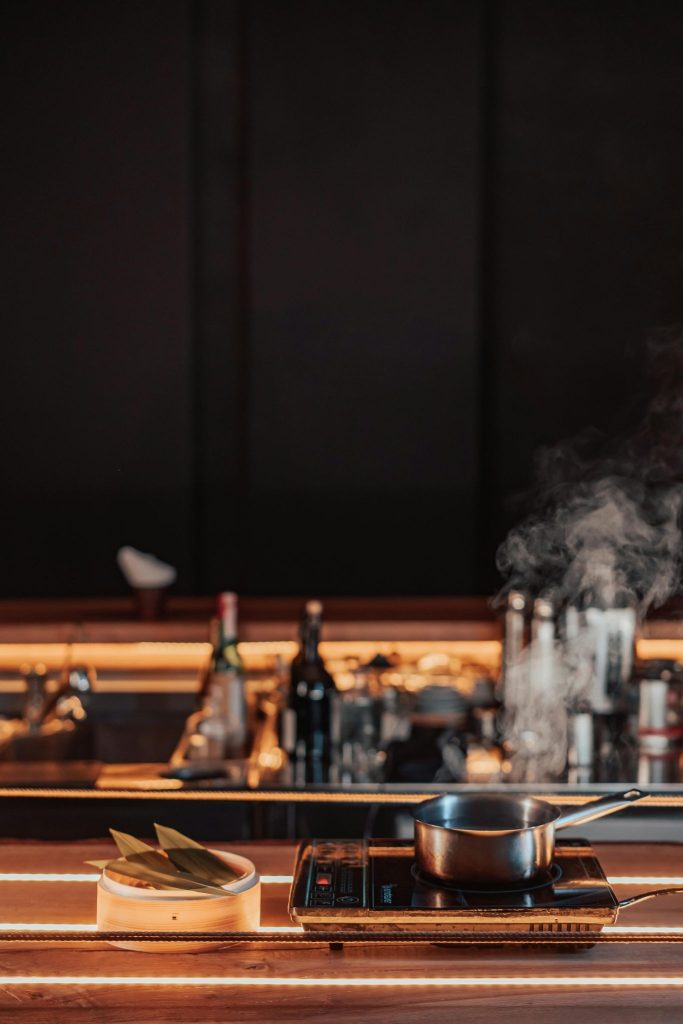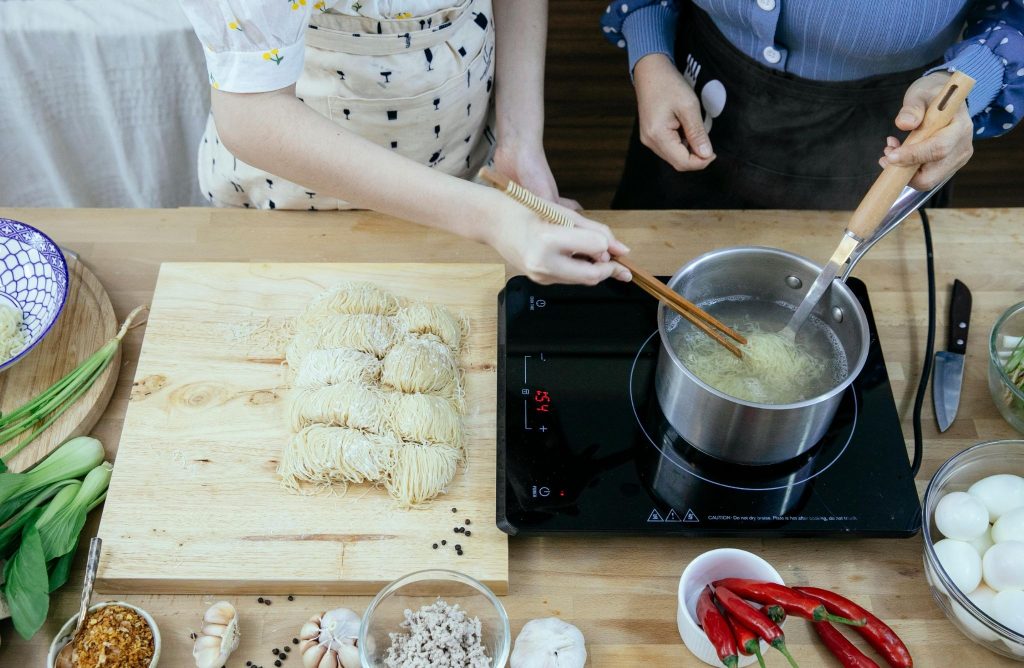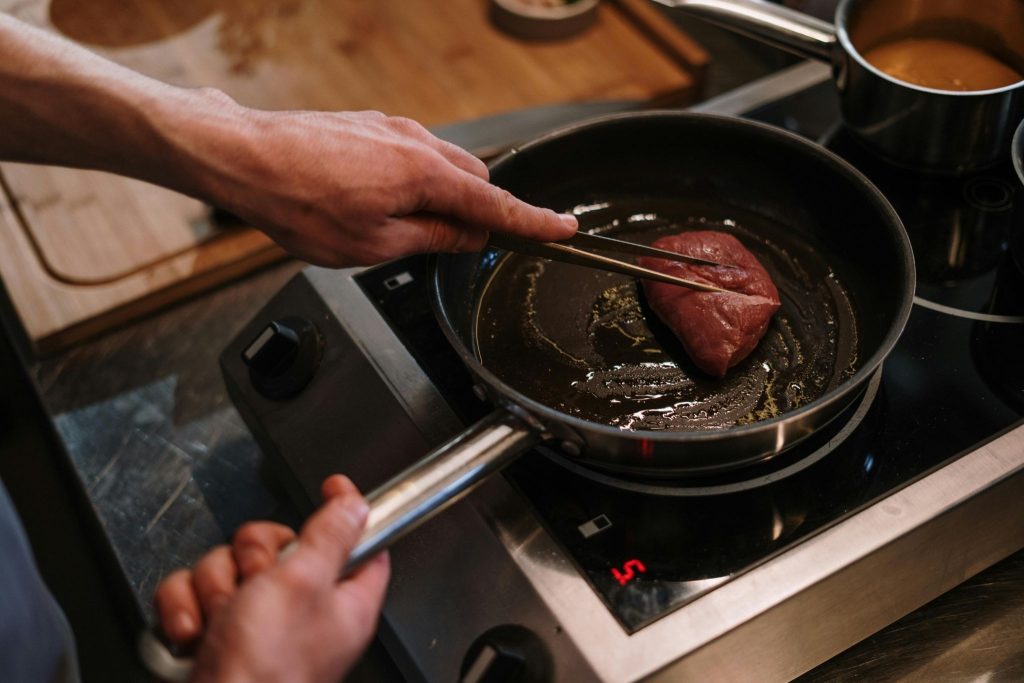
If you’re in the market for a new stove top (or cooktop), the induction variety is increasingly attractive. Here are key advantages of using a modern induction stove top, along with things to keep in mind.
What are the benefits?
- More efficient energy transfer: According to the manufacturer Electrolux, up to ~90% of generated heat can go into the cookware rather than wasted.
- Faster heating and precise temperature control: Induction cooktops heat the cookware directly, enabling quicker boil-times and more responsive changes.
- Cleaner, cooler surface: Since the heat is generated in the pan and not the surface, the cooktop stays relatively cool and easier to clean.
- Safety and modern features: Many models include pan-detection, auto shut-off, child lock, and minimal stray heat.
What to watch out for?
- Cookware compatibility: Your pots and pans must be induction-compatible (typically magnetic stainless steel or cast iron) for the cooktop to work.
- Cost and installation: Induction units often cost more upfront than basic electric/gas plus may require electrical upgrades.
- Habits & usability: Because the surface is flat glass-ceramic, you’ll need to take care with sliding pans and cleaning spills quickly.
What to Look For in an Induction Stove Top

When comparing models, here are key criteria to guide your decision:
- Size / Number of Zones: Evaluate how many cooking zones (burners) you need — 2, 4 or 5 zones are common.
- Power (Wattage): Higher wattage zones (often 1,500W–3,700W or more) allow faster heating and better performance for large pans.
- Cookware Compatibility / Zone Size: Some zones adapt to larger pans or bridge zones. Ensure your usual cookware will work well.
- Controls & Features: Touch controls, power-boost or “bridge” zones, preset menus, timers, child-lock functionalities.
- Surface & Maintenance: A smooth glass-ceramic surface is typical; check for ease of cleaning and durability.
- Safety & Support: Auto shut-off, residual heat indicators, pan-detection, good warranty support.
- Ventilation & Installation: Consider how you’ll integrate the unit in your kitchen, and ensure proper ventilation or clearance as required.
Top Induction Stove Top Picks
Here are several highly regarded induction cooktops worth considering (brands and models vary by region, so availability in Bangladesh/Asia may differ). Please verify local models, power compatibility, warranty, and region-specific features.
Here’s a quick summary of why each stands out:
- Bosch 800 Series 30‑in Induction Cooktop: Premium build, reliable brand, strong performance — great for serious cooks.
- KitchenAid 30‑in 5‑Element Sensor Induction Cooktop: Offers multiple zones including large ones for flexible cooking; good features.
- Samsung NZ30K7770RG 30‑in Induction Cooktop: Smart features, solid brand; appeals if you like tech integration.
- GE Profile Induction Cooktop 30‑in: Value brand, good balance of features and cost.
- Frigidaire Professional 30‑in Induction Cooktop: More budget-friendly while still offering induction advantages.
- Whirlpool 30‑in Induction Cooktop with Temp Cook: Focuses on temperature control presets — useful for sauce simmering or delicate work.
- Miele KM 6375 Induction Cooktop: A luxury model — excellent finish, high quality materials, for those who want top-tier.
- Electrolux EHI8255BE 80 cm Induction Hob: Larger width (80cm) suitable for spacious kitchens / multiple pans at once; strong European brand.
How to Choose Based on Your Use Case

- Small kitchen / 1-2 burners needed: Choose a 2- or 3-zone model, moderate wattage, simpler controls — e.g., value options.
- Family / frequent cooking: Opt for 4-5 zones, bridge or extra-large zones for bigger pans, higher wattage for speed.
- Gourmet / searing / large pans: Look for high wattage, large cooking zones, premium build and robust controls.
- Budget-conscious: Focus on essential features (induction-compatible zones, safety features) and accept fewer bells and whistles.
- Compatibility & installation in Bangladesh / Asia: Check local voltage, service/warranty availability, supply chains for parts. Make sure the model supports your kitchen’s electrical infrastructure.
FAQ (Frequently Asked Questions)
Q1: Do I need special cookware for induction?
Yes — your cookware must be induction-compatible, meaning it has a magnetic base (cast iron, magnetic stainless steel). If a magnet sticks to the bottom of your pan, it’s likely to work.
Aluminum, glass, or pure copper without a magnetic layer may not work.
Q2: Is an induction cooktop more efficient than gas or electric?
Yes — many sources indicate higher efficiency. For example, one guide shows ~90% of energy used goes into the cookware with induction, versus much lower for gas. Also, cooking times are shorter, which contributes to lower energy usage.
Q3: Is it safe to use?
Generally yes — because the surface stays cooler (only the pan heats), there’s less risk of accidental burns compared to open flame or hot coils. Many models include safety features like auto shut-off.
However, you still need to handle the hot pan itself carefully.
Q4: Are there any drawbacks?
- If your cookware isn’t compatible, you’ll need to upgrade.
- The glass surface needs care (avoid sliding heavy pans, clean spills quickly) — otherwise you risk scratching or damaging the surface.
- During a power outage, an induction cooktop won’t work (unlike a gas stove).
- Up-front cost may be higher than basic electric or gas.
Q5: What about cleaning & maintenance?
Cleaning is easier than many other types: the flat glass surface doesn’t have grates or burners, and because the surface stays cooler, spills don’t bake on as severely. Use non-abrasive cleaners, wipe spills promptly. Avoid dragging heavy cookware across the surface.
Q6: How do I know what power (wattage) or size I need?
Higher output (wattage) means faster heating. For serious cooking you’ll want higher wattage zones (often 2,000W or more). Panels recommend checking zone size, wattage, cooktop layout.
If your usage is moderate, a standard wattage cooktop with 4 zones may suffice.
Final Thoughts
Switching to an induction stove top can be a smart move — for speed, cleanliness, control, and energy savings. If you match your model to your cooking habits, kitchen size, and cookware, you’ll likely find it an upgrade.
When you’re ready, pick a model that fits your budget and space, ensure your cookware works (or plan an upgrade), and make sure your kitchen wiring and installation support the unit.
